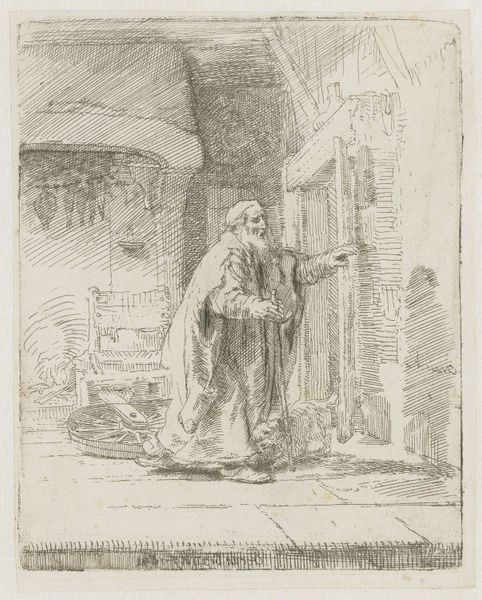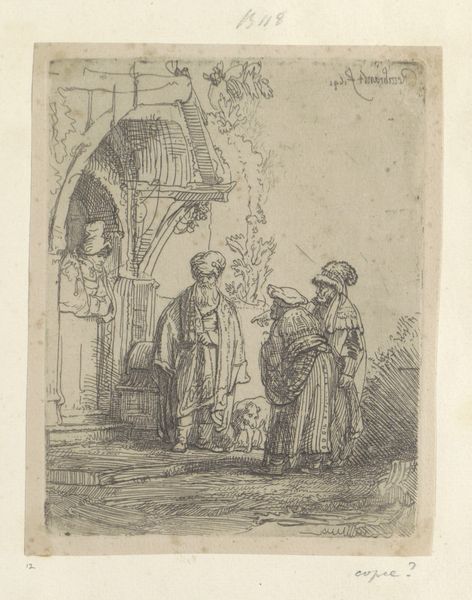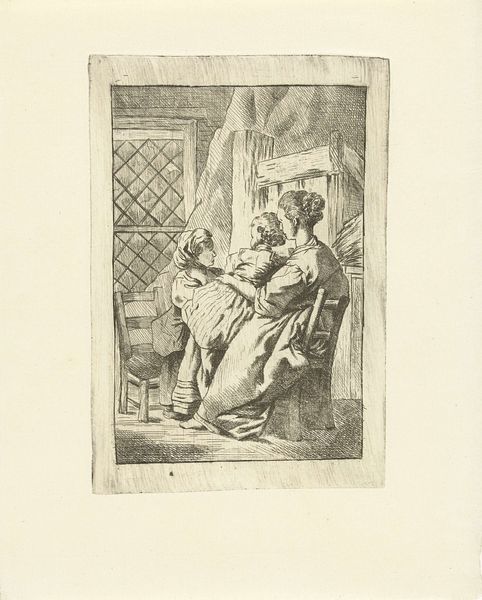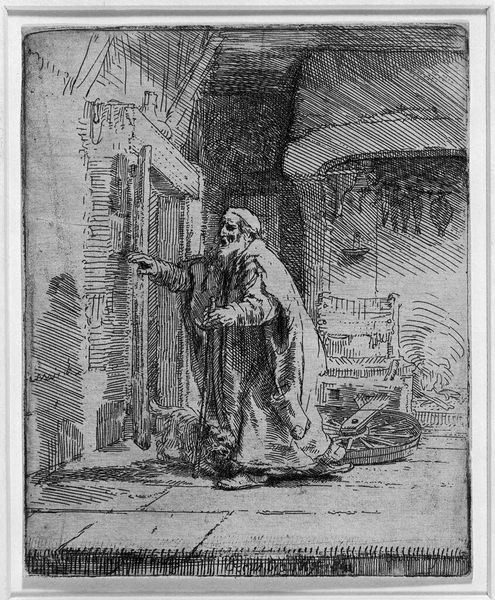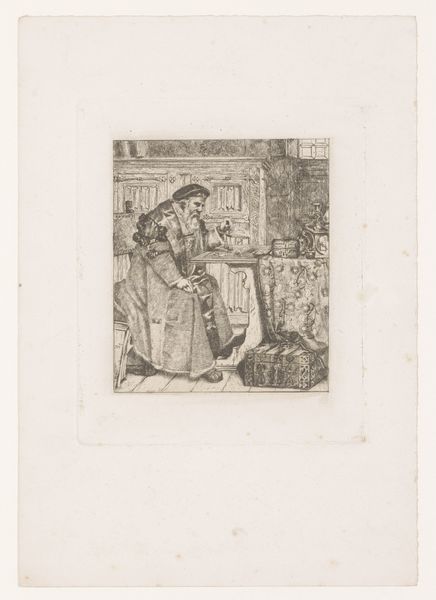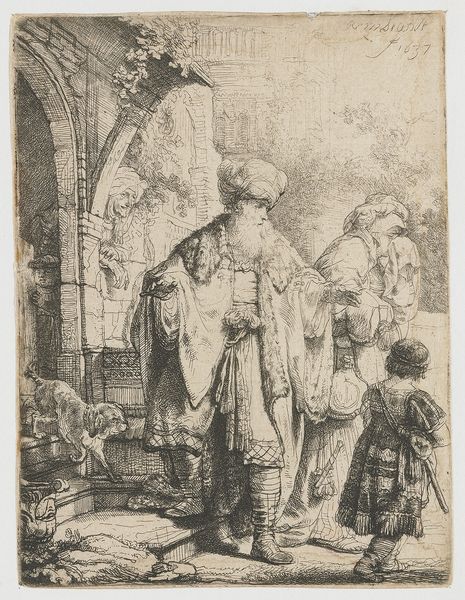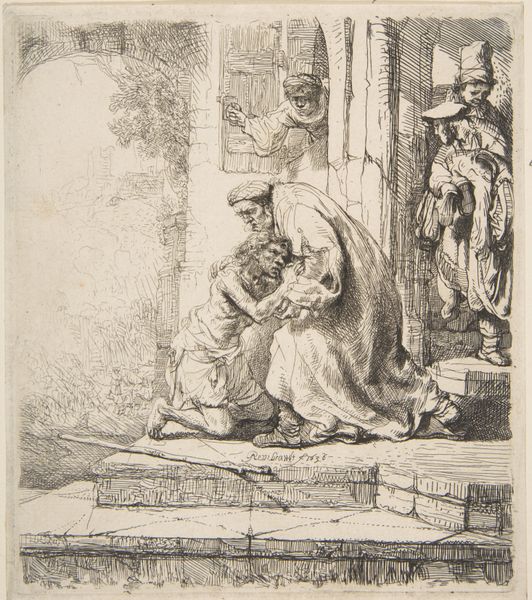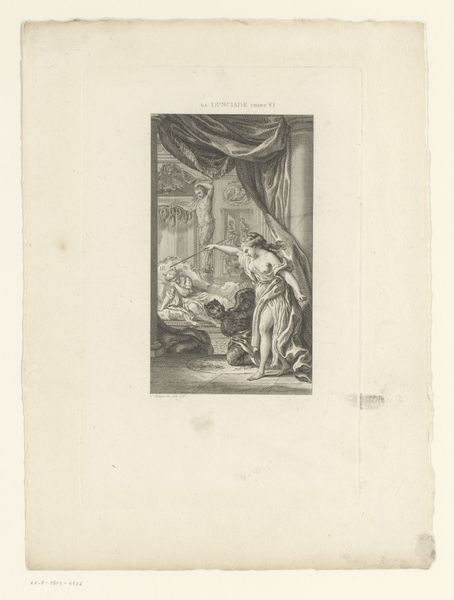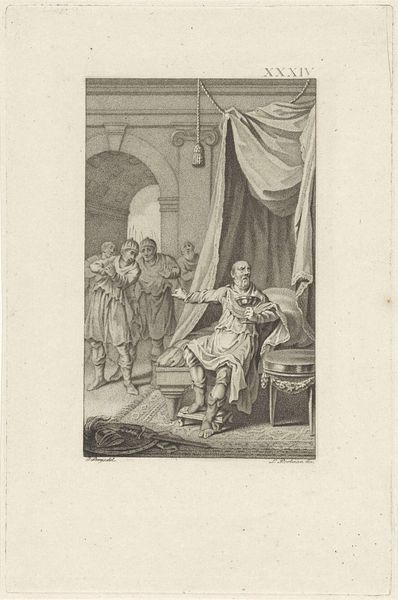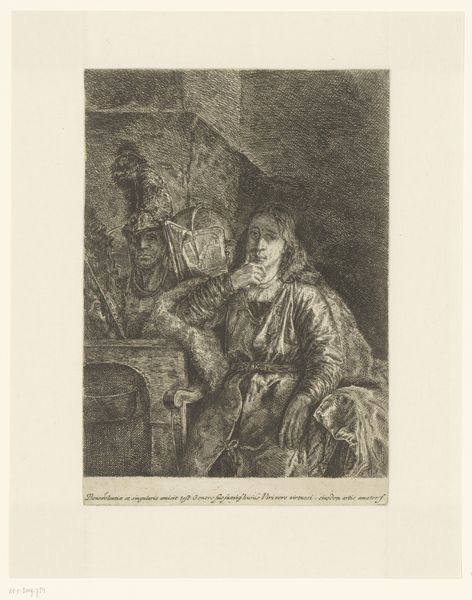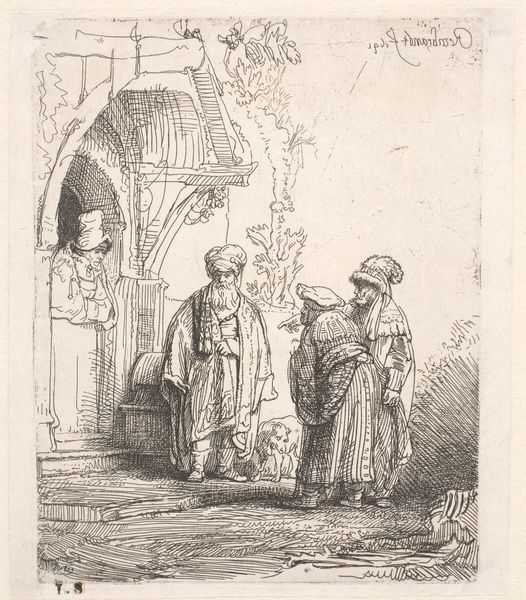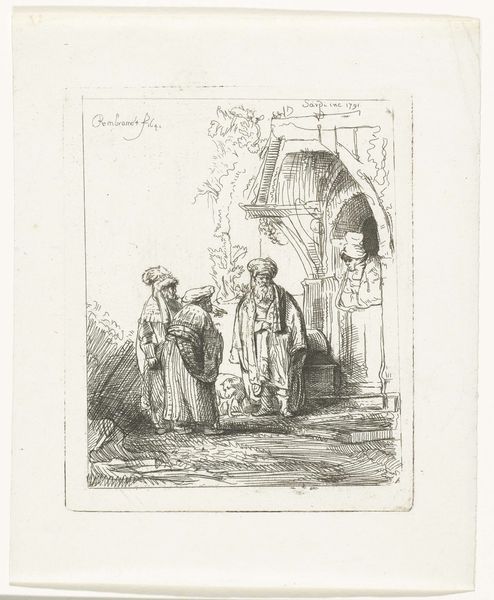
print, etching
#
portrait
#
narrative-art
#
baroque
#
dutch-golden-age
# print
#
etching
#
etching
#
figuration
Dimensions: 6 1/4 x 5 1/16 in. (15.9 x 12.9 cm) (plate)
Copyright: Public Domain
Curator: Rembrandt van Rijn's etching, "The Blindness of Tobit," created in 1651 and now held at the Minneapolis Institute of Art, presents us with an intimate domestic scene. Editor: The overall tone strikes me as somber, even unsettling. The heavy use of hatching and cross-hatching gives it a tangible, almost tactile quality despite being a print. There's an undeniable drama unfolding within those lines. Curator: Indeed. The etching technique itself is fascinating. Consider the copper plate, meticulously scored, bitten by acid, inked, and pressed. It's a multi-stage labor process translating image to reproducible object. Rembrandt wasn't just depicting a biblical scene; he was engaging with printmaking as a form of industry and artistic expression. Editor: Absolutely. But consider what that reproductive capacity allows: dissemination of powerful stories and enduring images. Tobit, leaning forward with a staff, groping towards the light, immediately evokes empathy. Blindness itself carries symbolic weight: loss, vulnerability, but also perhaps insight into a different kind of seeing. The little dog is a faithful symbol, common during the Baroque era. Curator: I'm struck by the composition of the scene – look at the humble interior. Rembrandt depicts everyday materials such as the simple doorway, walls, basket and tools in the corner with almost brutal honesty. These items represent Tobit’s physical world and life as a craftsman that become particularly important in a world without light. Editor: The lighting directs our gaze, highlighting key emotional features. The woman wiping tears perhaps – her expression conveying grief or frustration, underscoring the human toll of Tobit’s blindness. These are the lasting universal narratives woven into biblical themes that make Rembrandt so appealing across the ages. Curator: Rembrandt’s focus on production processes reveals him working amongst workshops. How do those circumstances influence an understanding of works consumed by various demographics? Editor: I’d argue Rembrandt uses this material production in order to highlight his message and narrative that continues to touch on the experience of blindness. The symbolism used across artistic, social and material contexts provides this narrative longevity. Curator: It is compelling to look at all facets of "The Blindness of Tobit", the product and process in one medium. Editor: A deeply meaningful interaction woven within the symbols across this 17th century masterpiece.
Comments
minneapolisinstituteofart almost 2 years ago
⋮
A succinct embodiment of pathos, this print came toward the end of Rembrandt's long fascination with the Book of Tobit. It focuses on the approach of Tobit's long-absent son while exploring the idea of inner and outer vision. Hearing Tobias's dog, Tobit topples a spinning wheel in his effort to reach the door, which eludes him as he poignantly stumbles toward his shadow. His senses are of little use, Rembrandt implies; Tobit must look to his faith for direction.
Join the conversation
Join millions of artists and users on Artera today and experience the ultimate creative platform.
